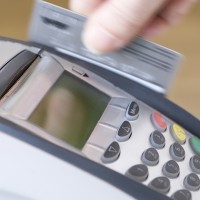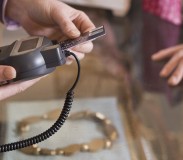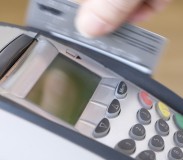
The Future of Debit To Credit Transactions

In the past twenty years, the number of people who use cash or checks to pay for retail transactions has been steadily increasing. In fact, many retail outlets no longer take checks as a form of payment. Debit cards are the digital answer to both checks and cash; a debit card is linked to your bank account and money is withdrawn at the exact time that you make a purchase. Credit, on the other hand, is a popular form of payment that involves borrowing money from a line of credit or loan. The loan is free of interest if you pay your monthly bill on time. If you let your credit card balance add up over time, you will end up paying interest on each transaction you make. Read on to find out how debit cards and credit cards have changed and will continue to change the commercial landscape.
History
The first debit card hit the market in the late sixties. The Bank of Delaware was the first bank in the United States to try out the idea. By the 1970s, other banks were offering debit cards. It wasn’t until the 1980s and 1990s, when Automatic Transaction Machines (ATMs) began appearing, that debit card use really picked up. In 1990, debit cards were used for approximately 300 million transactions. Nearly twenty years later, in 2009, they were used for 37.6 billion transactions. Credit cards have followed a similar trajectory, although they were actually introduced much earlier, possibly as early as 1946. The first popular credit card was introduced in 1966 by the Bank of America.
Predictions
Debit cards are currently a more popular option than credit cards; however, credit cards drive purchases in the online sector, which is rapidly growing. It is only recently that online retailers are starting to offer the option to use debit to pay for online transactions, through companies like PayPal and Interac. Debit card use will increase to pay for purchases online, while the use of credit cards will level off as consumers are given more options. Finally, in the future, plastic cards will disappear. Both debit and credit cards will be replaced by applications on mobile devices linked to your bank or credit account. Swiping the device will be all that is necessary to make a purchase.
Pros
Both debit and credit cards offer obvious advantages over carrying cash. Firstly, they are more difficult to steal – today’s debit and credit cards are protected with chips and a Personal Identification Number (PIN) that the user must know to make a purchase. Both debit and credit cards offer convenience to pay according to your own needs.
Cons
 With the increasing popularity of both credit and debit cards, fraud has become a problem. Sometimes, this involves stealing the card number by either compromising the terminal and placing a video camera to record the PIN number. Other times, hackers gain access to card information stored in the retailer’s online database.
With the increasing popularity of both credit and debit cards, fraud has become a problem. Sometimes, this involves stealing the card number by either compromising the terminal and placing a video camera to record the PIN number. Other times, hackers gain access to card information stored in the retailer’s online database.
Quick Wrap-Up
Debit will continue to remain the most popular way to pay for purchases. In the online world, more and more retailers will offer customers the option to pay with debit or credit.







